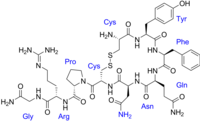
Uncovering the brain‐wide pattern of synaptic input to vasopressin‐expressing neurons in the paraventricular nucleus of the hypothalamus
Sign Up to like & getrecommendations! Published in 2023 at "Journal of Comparative Neurology"
DOI: 10.1002/cne.25476
Abstract: Arginine vasopressin (AVP) is a neuropeptide critical for the mammalian stress response and social behavior. AVP produced in the hypothalamus regulates water osmolality and vasoconstriction in the body, and in the brain, it regulates social… read more here.
Keywords: vasopressin; brain; expressing neurons; social behavior ... See more keywords

MOTOR UNIT DISCHARGE RATE AND THE ESTIMATED SYNAPTIC INPUT TO THE VASTI MUSCLES IS HIGHER IN OPEN COMPARED TO CLOSED KINETIC CHAIN EXERCISE.
Sign Up to like & getrecommendations! Published in 2019 at "Journal of applied physiology"
DOI: 10.1152/japplphysiol.00310.2019
Abstract: PURPOSE It has been suggested that closed kinetic chain exercises may induce more balanced activation of vastus medialis (VM) and lateralis (VL) compared to open kinetic chain exercise. This study aimed to 1) compare between-vasti… read more here.
Keywords: kinetic chain; synaptic input; motor; motor unit ... See more keywords

Common synaptic input between motor units from the lateral and medial posterior soleus compartments does not differ from that within each compartment.
Sign Up to like & getrecommendations! Published in 2022 at "Journal of applied physiology"
DOI: 10.1152/japplphysiol.00587.2022
Abstract: The human soleus muscle is anatomically divided into four separate anatomical compartments. The functional role of this compartmentalisation remains unclear. Here, we tested the hypothesis that the common synaptic input to motor units between the… read more here.
Keywords: common synaptic; motor units; motor; synaptic input ... See more keywords

Estimation of self-sustained activity produced by persistent inward currents using firing rate profiles of multiple motor units in humans.
Sign Up to like & getrecommendations! Published in 2020 at "Journal of neurophysiology"
DOI: 10.1152/jn.00194.2020
Abstract: Persistent inward calcium and sodium currents (IP) activated during motoneuron recruitment help synaptic inputs maintain self-sustained firing until de-recruitment. Here, we estimate the contribution of the IP to self-sustained firing in human motoneurons of varying… read more here.
Keywords: firing rate; recruitment; self sustained; synaptic input ... See more keywords

Less common synaptic input between muscles from the same group allows for more flexible coordination strategies during a fatiguing task.
Sign Up to like & getrecommendations! Published in 2022 at "Journal of neurophysiology"
DOI: 10.1152/jn.00453.2021
Abstract: This study aimed to determine whether neural drive is redistributed between muscles during a fatiguing isometric contraction, and if so, whether the initial level of common synaptic input between these muscles constrains this redistribution. We… read more here.
Keywords: input muscles; neural drive; common synaptic; contraction ... See more keywords

Scn2a severe hypomorphic mutation decreases excitatory synaptic input and causes autism-associated behaviors
Sign Up to like & getrecommendations! Published in 2021 at "JCI Insight"
DOI: 10.1172/jci.insight.150698
Abstract: SCN2A, encoding the neuronal voltage-gated Na+ channel NaV1.2, is one of the most commonly affected loci linked to autism spectrum disorders (ASDs). Most ASD-associated mutations in SCN2A are loss-of-function mutations, but studies examining how such… read more here.
Keywords: voltage gated; scn2a; scn2a 1898; synaptic input ... See more keywords